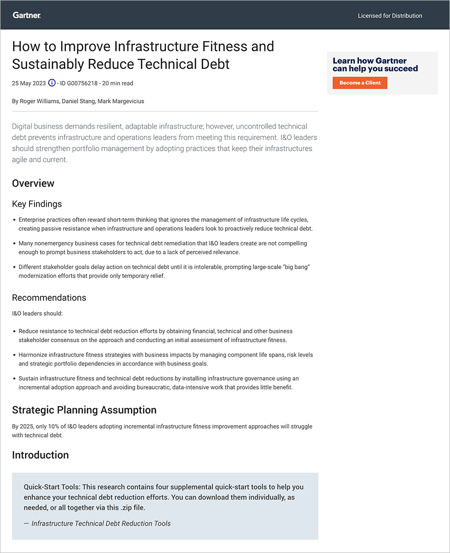GARTNER® REPORT
Gartner® Report: How to Improve Infrastructure Fitness and Sustainably Reduce Technical Debt

Outdated technology and technical debt create many IT risks for enterprises. These include security breaches, unplanned downtime, and system crashes. Infrastructures cluttered with obsolete technology and unsupported end-of-life (EOL) software artifacts also hinder agility and prevent organizations from adapting to new technologies and changing market conditions.
It is critical for enterprise architects to proactively minimize the risks of technological obsolescence and reduce technical debt. The ability to perform robust technology risk assessments and know which components are reaching their end of service life – and when – is key to successful obsolescence risk management.
According to Gartner®, "The increased costs and risks from using infrastructure components past their end of life are incompatible with digital business."
This in-depth report from Gartner delves into why so many organizations struggle with technical debt and obsolescence risk management and recommends key strategies for success.
Our takeaways from this report:
Sorry, this content is no longer available.
You also might be interested in our free white paper:
The 5 types of obsolescent tech holding back your organization
Gartner, How to Improve Infrastructure Fitness and Sustainably Reduce Technical Debt, Roger Williams, Daniel Stang, Mark Margevicius, 25 May 2023
GARTNER is a registered trademark and service mark of Gartner, Inc. and/or its affiliates in the U.S. and internationally and is used herein with permission. All rights reserved.